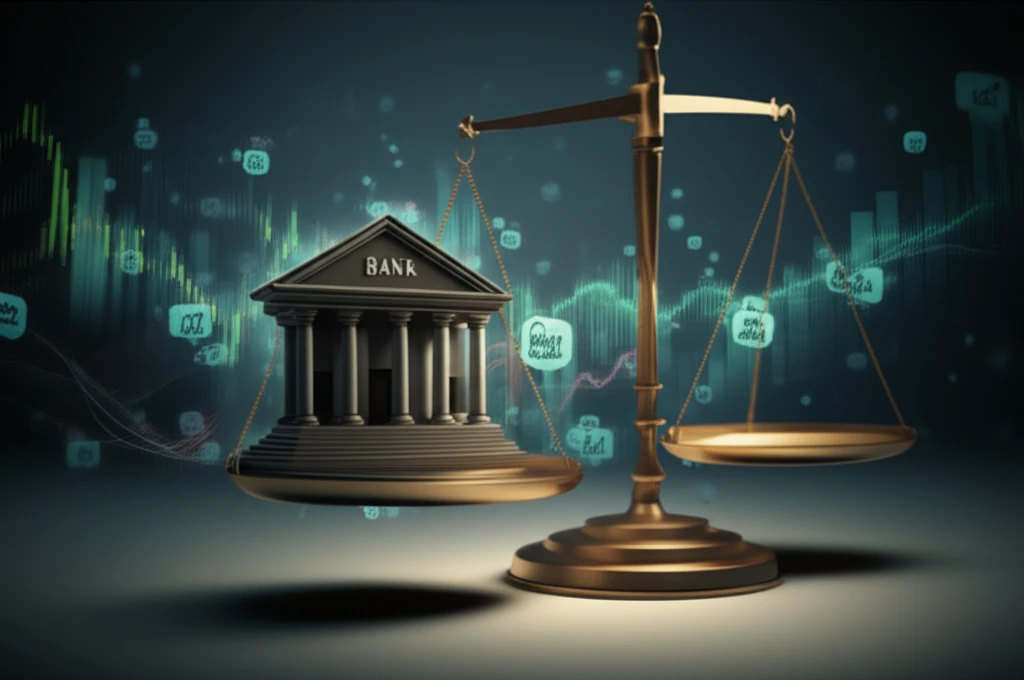
Bank Value Boost: Is Your Risk Scorecard the Secret?
"Unlock hidden value and gain a competitive edge with Banking Risk Balanced Scorecards (BRBS). Learn how to measure, manage, and maximize your bank's potential."
In today's dynamic financial landscape, banks face an array of complex risks that can significantly impact their stability and profitability. Traditional risk management approaches often fall short, failing to provide a holistic view of the interconnectedness of risks and their impact on overall bank value. Enter the Banking Risk Balanced Scorecard (BRBS), a revolutionary framework designed to measure and manage risks in a comprehensive and strategic manner.
The BRBS goes beyond conventional financial metrics to incorporate non-financial aspects, such as customer satisfaction, internal processes, and employee learning and growth. By integrating these diverse perspectives, banks gain a more nuanced understanding of their risk profile and can make more informed decisions to optimize stakeholder value and achieve a sustainable competitive advantage.
This article delves into the effectiveness of BRBS in enhancing bank value, exploring its key components, benefits, and practical applications. We'll examine how BRBS can help banks navigate the complex risk landscape, improve decision-making, and ultimately drive long-term success.
What is a Banking Risk Balanced Scorecard (BRBS)?

A Banking Risk Balanced Scorecard (BRBS) is a strategic performance management tool designed specifically for the banking sector. It adapts the principles of the traditional Balanced Scorecard to incorporate a comprehensive view of risk management, aligning it with the bank's overall strategic objectives. Unlike traditional risk management approaches that focus solely on financial metrics, BRBS considers both financial and non-financial aspects of risk, providing a holistic perspective on the bank's risk profile.
- Financial Perspective: This perspective focuses on traditional financial measures such as profitability, return on equity (ROE), and economic value added (EVA). It assesses how well the bank is managing its financial risks and generating value for shareholders.
- Customer Perspective: This perspective examines customer satisfaction, loyalty, and retention. It recognizes that customer relationships are a valuable asset and that managing customer-related risks is crucial for long-term success.
- Internal Process Perspective: This perspective focuses on the efficiency and effectiveness of the bank's internal processes. It identifies key processes that drive value creation and assesses the risks associated with these processes.
- Learning and Growth Perspective: This perspective focuses on the bank's ability to innovate, improve, and adapt to changing market conditions. It assesses the risks associated with human capital, technology, and organizational culture.
The BRBS Advantage: A Competitive Edge in a Risky World
In conclusion, the Banking Risk Balanced Scorecard (BRBS) offers a powerful framework for banks to enhance their risk management practices, optimize stakeholder value, and achieve a sustainable competitive advantage. By integrating financial and non-financial perspectives, the BRBS provides a holistic view of the bank's risk profile, enabling informed decision-making and proactive risk mitigation. As the financial landscape continues to evolve, banks that embrace the BRBS framework will be well-positioned to navigate the challenges and capitalize on opportunities, driving long-term success in an increasingly risky world.
